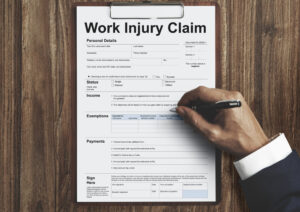Work injuries happen. Employers and other interested stakeholders seeking to reduce workers’ compensation program costs need to be prepared for effective injury management and response. When done properly, the injured employee will return to work quicker, and money will be saved. Now is the time to implement an effective injury management program in your workplace.
It All Starts with a Quick Injury Reporting Process
Work injuries need to be reported in a timely manner. Failure to do so can add dollars to any workers’ compensation claim. Countless studies demonstrate that failing to report an injury within 20-60 minutes of its occurrence is the most troublesome. Here is a list of steps that can be taken to ensure a quick reporting process:
Click Link to Access Free PDF Download
“13 Research Studies to Prove Value of Return-to-Work Program & Gain Stakeholder Buy-In”
- Develop a safety-minded company culture where all employees can feel comfortable reporting a work injury;
- Develop a simplified process for reporting an injury. All employees need to be continuously reminded how and when to report a work injury;
- Implement a streamlined injury reporting process. This can go beyond paper, and pencils. Many claim management applications are available for a smartphone to document an injury, take pictures to preserve the injury scene, and upload the injury report to the employer and insurance carrier;
- Ensure effective medical care is available and accessible to all employees. This can include the use of telephonic nurse triage services to assist in injury evaluation and direct medical care.
Supervisors and upper management must avoid accusatory language when interacting with an employee following a work injury. Never blame the employee. Empathy pays dividends.
Effective Communication Between All Stakeholders
The lack of information drives uneasiness and concern. Very few injured employees have a legal background. Failing to respond to inquiries or providing an employee with basic workers’ compensation information can force them to retain an attorney. When employees are treated fairly, there is less friction and fewer litigated claims.
- Designated a point of contact with the employer for all workers’ compensation information. This can include basic information regarding the claims process and information on the company’s workers’ compensation insurance carrier;
- Follow-up with the injured employee and check on their status. Simple things such as a telephone call or in-person visit can add the needed human touch. There is nothing wrong with sending a “get well soon” card; and
- Continue to follow-up with the injured employee and regularly check-in regarding their medical status, restrictions on activity, and return-to-work options.
Returning the injured employee to work is important. The quicker an employee returns to work, the fewer dollars will be spent on the claim.
Consistency Is Key!
Everyone has their notions of fairness. This becomes a major issue in workers’ compensation when people feel as if they are treated differently. This can be a driver in program costs when it comes to litigated claims or return-to-work. These procedures can be formalized in written documents for full disclosure. It also helps direct people to the proper contacts, and questions get answered in a timely manner.
Return-To-Work Must Be the Goal
There are many barriers to effective return to work. Common examples include:
- Medical barriers: This can include prior injuries, or comorbid conditions. The need for surgery, additional physical therapy, and work hardening can also be challenges.
- Employer barriers: Do not use “global settlements” that requires a voluntary termination of employment on every claim. More often than not, it is better to have an employee return to work following an injury.
- Employee barriers: De-conditioning happens quickly when someone is not active. A review needs to be made of an employee’s transferable job skills, so they can get back into the workplace as soon as possible.
Proactive employers should have a liaison regarding all return issues. This person can be effective when they understand the medical and vocational issues. Do not let overly aggressive defense attorneys block return-to-work efforts. Attorneys can come in useful when reviewing the legal issues of this issue, such as state and federal disability and anti-discrimination laws.
Conclusions
All work injuries need to be reported in a timely manner and correctly managed. This requires proactive employers and other stakeholders to effectively manage the work injury. The goal should be immediate medical care for the injured employee, fast reporting, proper communication, and consistency. When done right, the employee will be back to work as soon as possible to reduce workers’ compensation program costs.

Author Michael Stack, CEO Amaxx LLC. He is an expert in workers’ compensation cost containment systems and helps employers reduce their workers’ comp costs by 20% to 50%. He works as a consultant to large and mid-market clients, is a co-author of Your Ultimate Guide To Mastering Workers Comp Costs, a comprehensive step-by-step manual of cost containment strategies based on hands-on field experience, and is the founder & lead trainer of Amaxx Workers’ Comp Training Center, which offers the Certified Master of Workers’ Compensation national designation.
Contact: mstack@reduceyourworkerscomp.com.
Workers’ Comp Roundup Blog: https://blog.reduceyourworkerscomp.com/
©2020 Amaxx LLC. All rights reserved under International Copyright Law.
Do not use this information without independent verification. All state laws vary. You should consult with your insurance broker, attorney, or qualified professional.















 How to Avoid Paying for Pre-Existing Injuries
How to Avoid Paying for Pre-Existing Injuries
